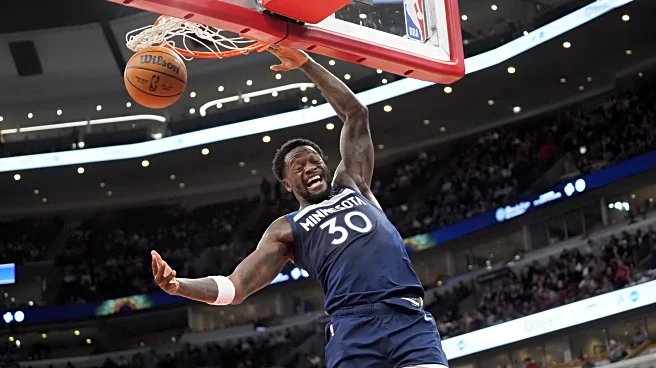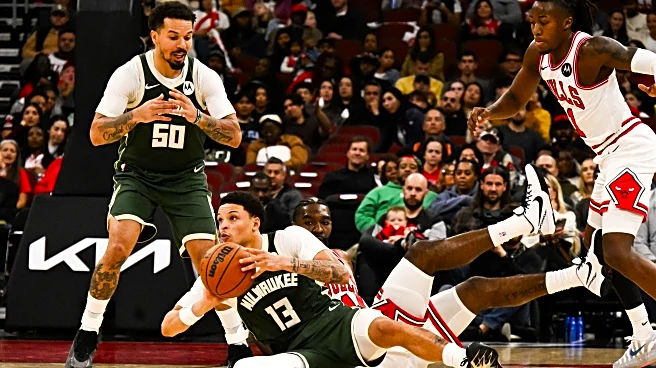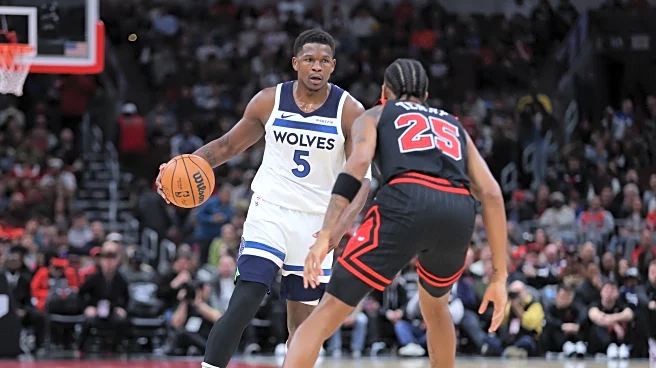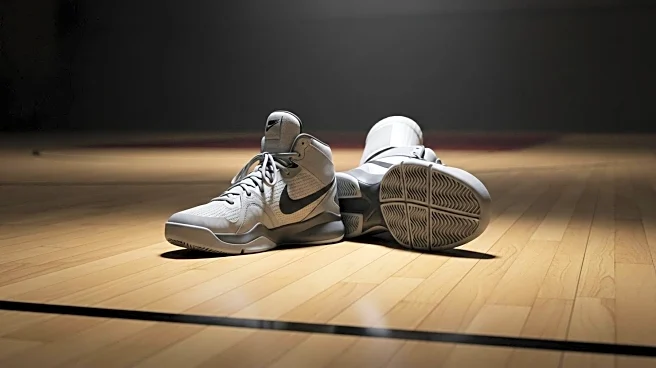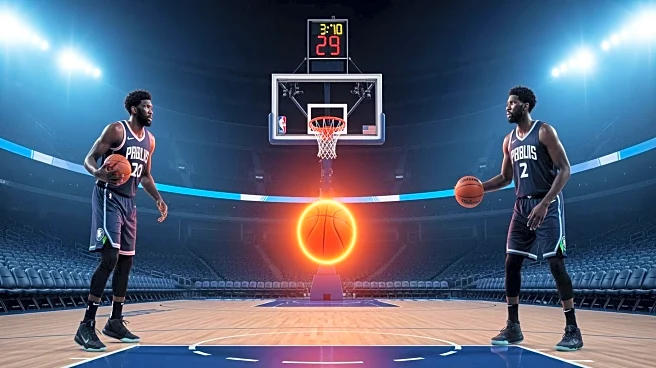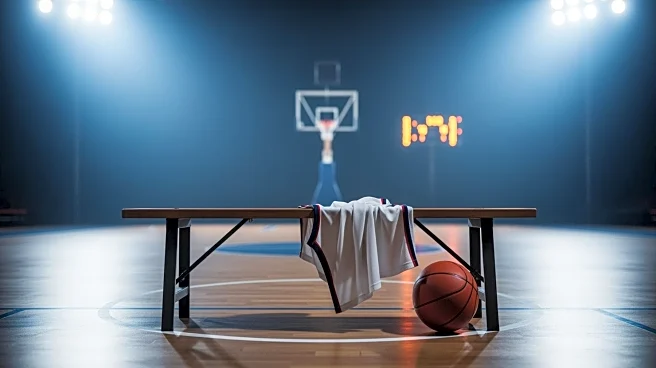What's Happening?
Patrick Williams, a forward for the Chicago Bulls, will not participate in the team's preseason finale against the Minnesota Timberwolves due to hamstring tightness. This decision is reportedly made out
of caution, as the Bulls aim to ensure Williams is fit for the regular season opener against the Detroit Pistons. Williams, who is 24 years old, has been a key player for the Bulls, and his absence in the preseason game is seen as a preventive measure to avoid aggravating his condition. The Bulls are focusing on his recovery to have him ready for the upcoming season, where he is expected to play a significant role.
Why It's Important?
The decision to rest Patrick Williams highlights the Chicago Bulls' strategic approach to player health and readiness for the regular season. Williams' performance is crucial for the Bulls, as he contributes significantly to the team's dynamics on the court. Ensuring his health is vital for the Bulls' competitive edge in the upcoming season. This move also reflects broader trends in professional sports where teams prioritize long-term player health over short-term gains. The Bulls' cautious approach may influence other teams to adopt similar strategies, emphasizing the importance of player welfare in sports management.
What's Next?
Patrick Williams is expected to return for the regular season opener against the Detroit Pistons. The Bulls will monitor his recovery closely, and his participation will depend on his fitness levels leading up to the game. The team will likely continue to assess his condition to prevent any further injury. Fans and analysts will be watching closely to see how Williams performs once he returns, as his presence is crucial for the Bulls' strategy and success in the season.
Beyond the Headlines
This situation underscores the importance of managing athlete health in professional sports. The Bulls' decision to rest Williams may set a precedent for other teams to prioritize player health over immediate performance. It also raises questions about the pressures athletes face to perform despite injuries and the role of sports management in safeguarding their well-being. Long-term, this could lead to changes in how teams approach preseason games and player readiness.



